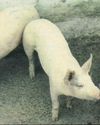In this first article of a three-part series on the basic principles of planning, constructing and maintaining poultry housing, independent poultry consultant Jan Grobbelaar discusses the environmental requirements, and temperature management in particular, to which poultry houses must adhere in order to offer chickens a safe and comfortable shelter.

A commercial poultry house is a structure or building that is constructed in such a way, and with the use of the correct materials, to ensure that the environmental conditions and safety of the chickens inside are favourable for them to be most productive.
Commercial poultry houses come in different shapes and sizes, and can be constructed with various types of building materials. The size and shape of the house will depend on the production type and system that the poultry producer chooses (broilers, pullets or layers). The size of the house will also be determined by the number of chickens reared or kept for production.
The first element a prospective producer should consider is the chickens’ environmental requirements.
The environmental conditions important for chickens to reach optimal productivity will differ between production systems, and include the following aspects: temperature, ventilation, floor space and litter.
IDEAL TEMPERATURES
Chickens are warm-blooded (homeothermic), and have the ability to maintain a relative constant body temperature through homeostasis.
However, this mechanism is only efficient if the ambient temperature is between 18°C and 28°C, as chickens do not adjust well to extremes.
Their internal body temperatures show more variability than that of mammals, and this is why chickens have no absolute body temperature. Adult chickens’ body temperatures range between 40,6°C and 41,7°C, while newly hatched chicks have body temperatures of about 39°C.
This temperature increases daily until it reaches a stable level at about three weeks of age. The body temperature is regulated by a part of the brain called the hypophyse. This part of the brain is comparable to a thermostat.
This story is from the Farmers Weekly 1 June 2018 edition of Farmer's Weekly.
Start your 7-day Magzter GOLD free trial to access thousands of curated premium stories, and 9,000+ magazines and newspapers.
Already a subscriber ? Sign In
This story is from the Farmers Weekly 1 June 2018 edition of Farmer's Weekly.
Start your 7-day Magzter GOLD free trial to access thousands of curated premium stories, and 9,000+ magazines and newspapers.
Already a subscriber? Sign In

Improving efficiencies in feed and grain milling
Bühler, a Swiss-based company that provides solutions and equipment for various industries, including food and animal feed processing, has pledged that by 2025, it will deliver scalable solutions that will reduce energy, waste and water by 50% in the value chains of its customers.

Tips for better olive production
At an SA Olive Association field day in November, industry experts shared ways to improve olive production efficiencies, from soil preparation to harvesting.

More effort needed to protect vulnerable cheetah
On International Cheetah Day, commemorated every year on 4 December, emphasis was placed on the vulnerability of the species.

Global agriculture: news that made the headlines
Farmer protests, droughts and floods dominated international agricultural news throughout 2024. Here, Janine Ryan gives an overview of these challenges.

Something to scratch a head about
This article showed that if you interact with your pigs, your sows will be happy and their piglets will have better growth.

ARC names best dairy producers of the year
The Agricultural Research Council (ARC) recently announced the winners of the 2024 National Master Dairyman Awards at an event hosted by AgriExpo in Stellenbosch, Western Cape.

Lion breeders to give up bone stockpiles?
The Ministry of Forestry, Fisheries and the Environment issued an official notice in mid-November in which it called on lion breeders to voluntarily hand over their lion bone stockpiles to the state as soon as possible.

Thousands of British farmers march on parliament against inheritance tax
Thousands of UK farmers gathered in London, England, on 19 November to demand the government repeal a proposed inheritance tax on agricultural land, which they argued threatened the future of family-run farms (see page 4), Al Jazeera reported.

Feed, hay, and other costs are up, so it's time to get creative
Breeders and riding schools need to explore innovative ways to generate income in order to ensure their survival, says Dr Mac.

How to make polystyrene seedling trays last longer
While thinking about how to prolong the lifespan of polystyrene seedling trays that are exposed to harsh sunlight, Bill Kerr began to wonder if a coat of paint might offer a solution.